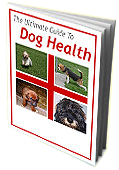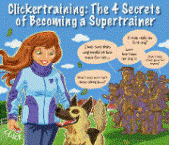Good Dog Training Advice
Get Fast & Simple Dog Training Tips to
Turn a Difficult Dog Into an Obedient Pet!
How to Keep Your Dog's Mouth Healthy
Ever heard the old adage that your dog's mouth is cleaner than yours? Unfortunately, that urban myth can lead to quite a bit of suffering for our furry friends who need just as much, if not more regular dental care than we do. In truth, a dog's mouth is loaded with enzymes that are far more active than those in our own mouths. It means they can eat things that we would never be able to put in our own mouths. It doesn't, however, protect them against gingivitis and plaque - the leading factors behind gum disease. So, when your dog doesn't get the tooth care he or she needs, periodontitis can develop - leading to very serious pain and possibly life threatening conditions in your dog's health. Keeping it Clean Of course, keeping your pup's mouth squeaky clean is not hard. Much like human beings, if a dog has regular dental car, their teeth will remain safe and clean for the duration of their life. They won't need to worry about bone loss, gum bleeding, or spreading infections. Here's the thing though - it costs a LOT of money to have your vet clean your dog's teeth. It can be $100-$200 just for the cleaning and if your dog won't accommodate the prodding and needs to be put under general anesthesia, it can be even harder to get them clean. Before you ever put your hands near or in your dog's mouth, make sure they are okay with it. Most vets, if your dog has never had this done, will simply knock them out to avoid any potential biting. Dog's don't inherently like their mouths being played with, so they can get protective. At home, this is less likely because your dog trusts you and will usually let you do what needs to be done. Nonetheless, be careful - especially if it is a rescue dog or an older dog that you haven't had for very long. All you really need, once you've established the pack order and your safety is a toothbrush made especially for dogs (they have longer bristles and narrow head to get into the back and reach the molars) and special toothpaste that is designed for dogs. Don't use normal human toothpaste as it has certain chemicals in it that your dog cannot ingest properly. Dog toothpastes are safe for them to swallow since you can't simply have your dog "spit' when done. You may also want a small washcloth to wrap around your fingers. Cleaning the Teeth Make sure your dog is nice and relaxed when you go to clean his teeth. A wound up or agitated dog can be hard to get to sit still. I like to take him out for a walk before any cleaning gets don. This will make sure that he has no excess energy that might get channelled toward me. Now, lift his upper lip carefully and start brushing in a circular motion. Be slow and careful with your dog to show him you're not going to hurt him, but don't flinch or pull away unless he is about to bite. If you show fear he may grow agitated. Make sure, while cleaning, to scrub the gum line carefully because this is where most of the bacteria will grow and where your dog's teeth will have the most issues. Make sure to cover every tooth on your way around the dog's mouth. Ideally, it should only take a twice weekly cleaning to remove that bad doggy odor in their mouth and to make sure their teeth are nice and clean.
| |
|


Discover the Secrets to Training Your Dog Or Puppy. Huge BONUSES for a limited time only!
Click here now...
|
http://GoodDogTrainingAdvice.com






